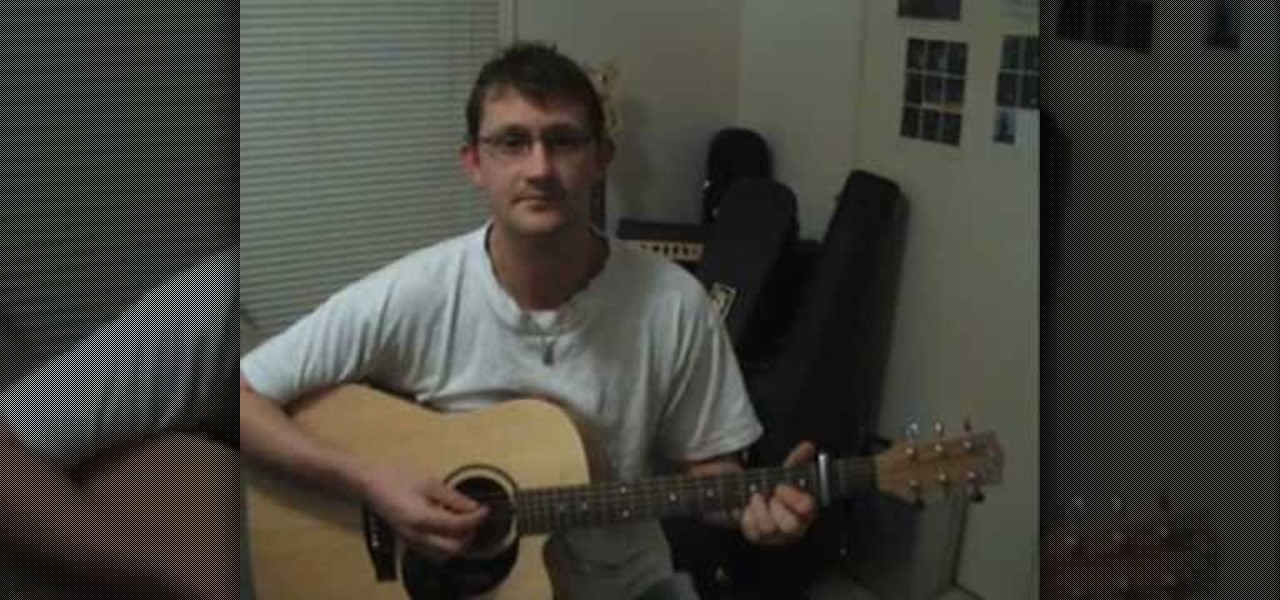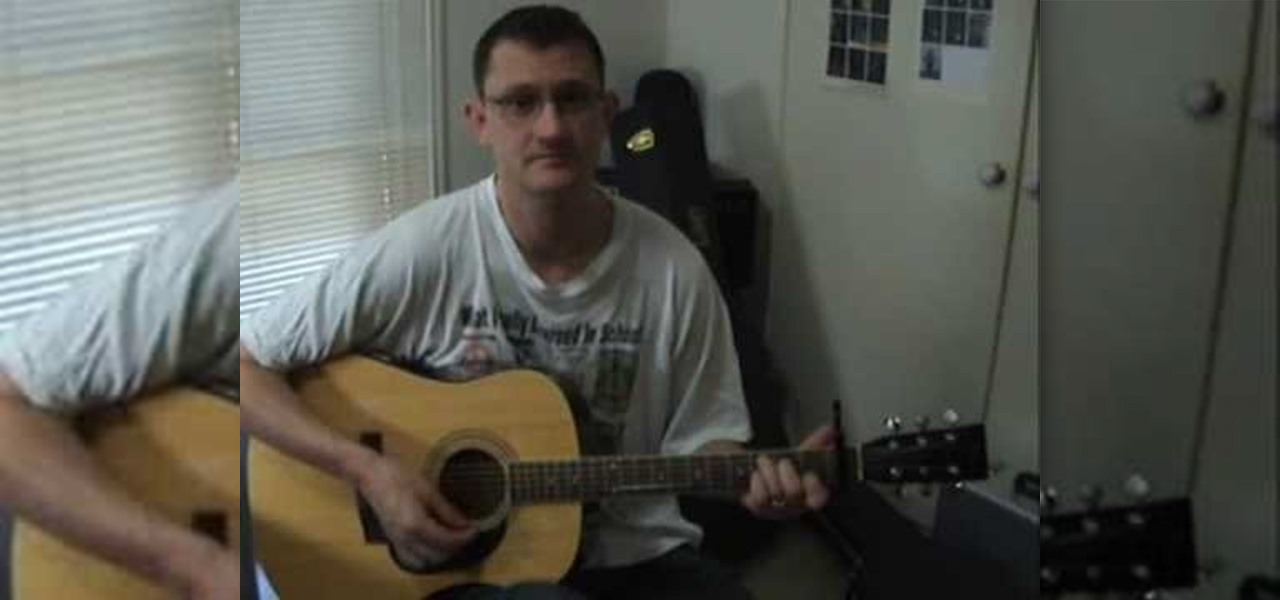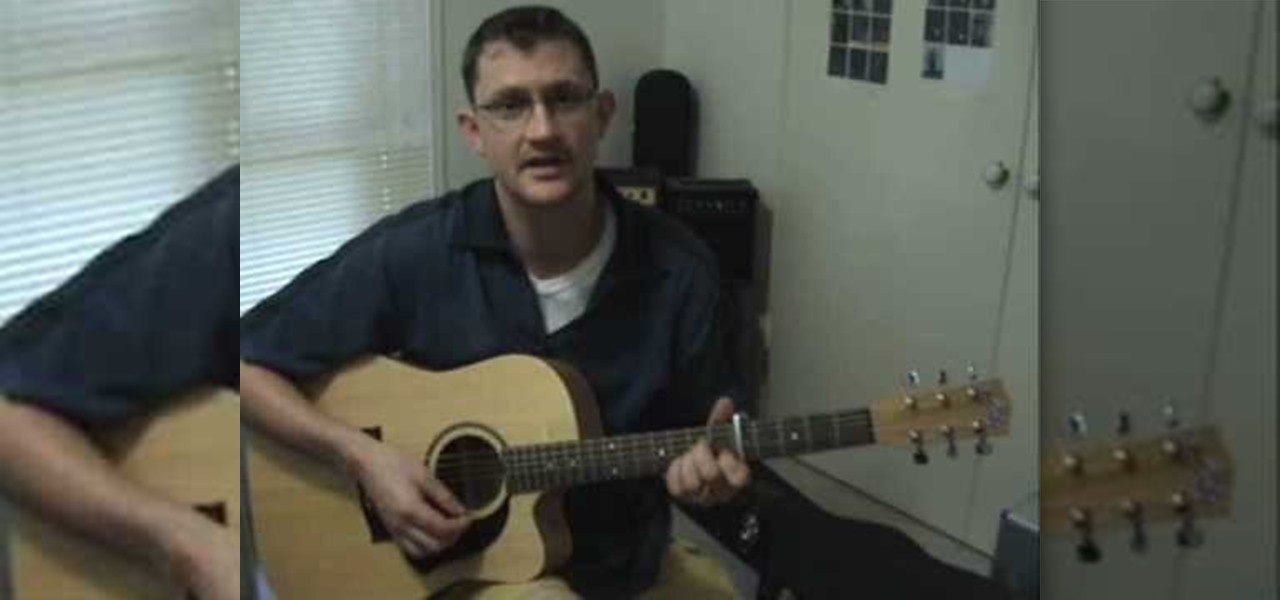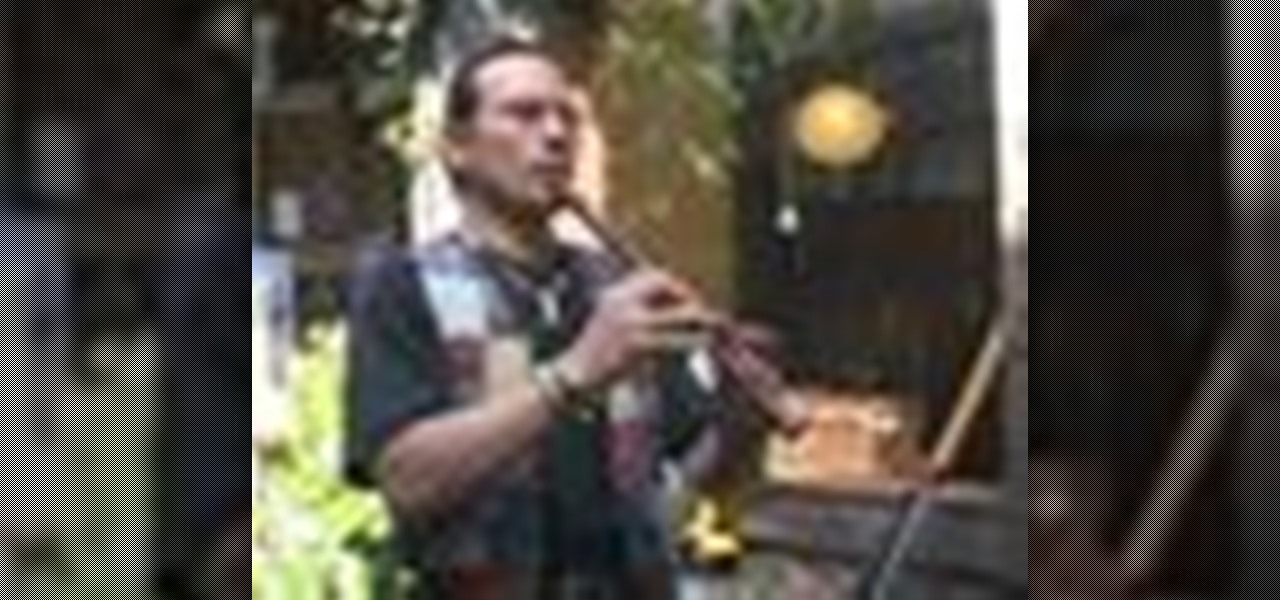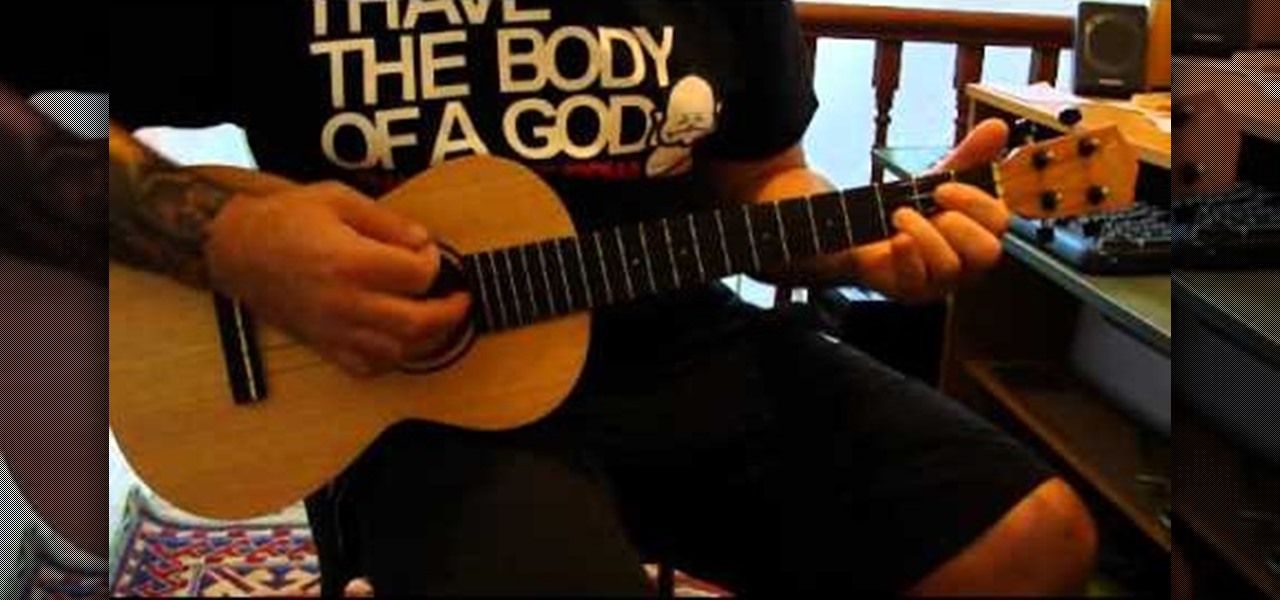Hot Music & Instruments Posts

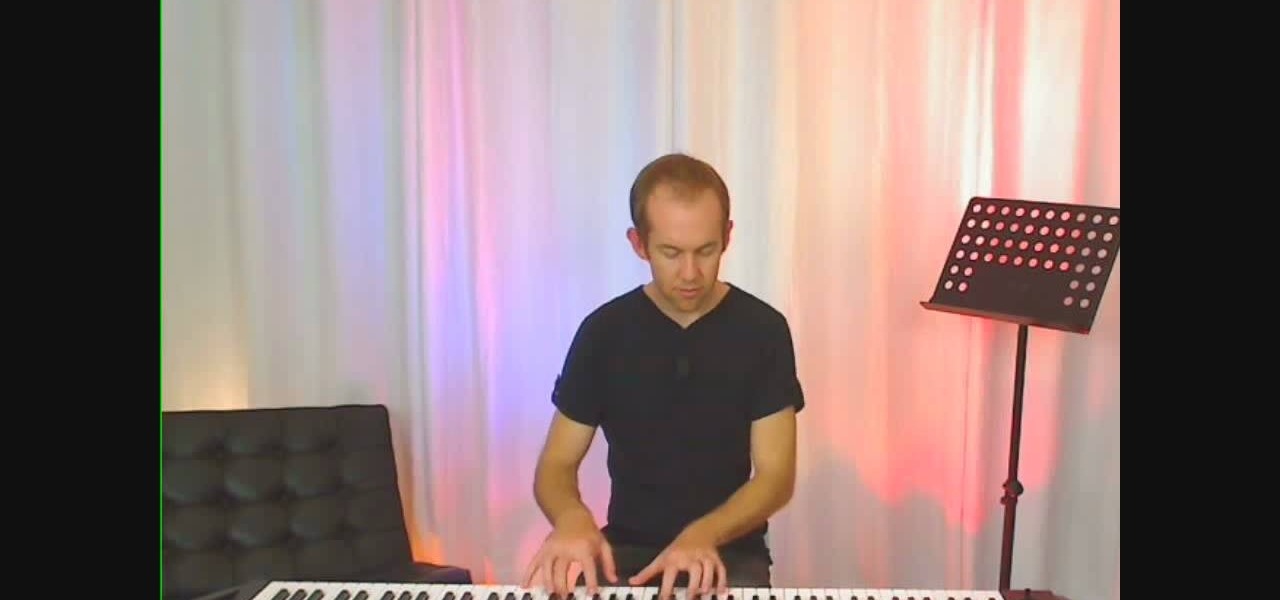
How To: Sing high notes and use your head voice
This video will show you what your head voice is and how to sing high notes. Your head voice is a higher range than your normal chest voice, which can only go a certain range. Your head voice is the voice that occurs when your singing and vibration of your vocal chords is felt higher up than your chest, in your head area. This tutorial will show you how you can find this head voice and demonstrates a good method for exercising your voice so that you will be able to more efficiently sing highe...
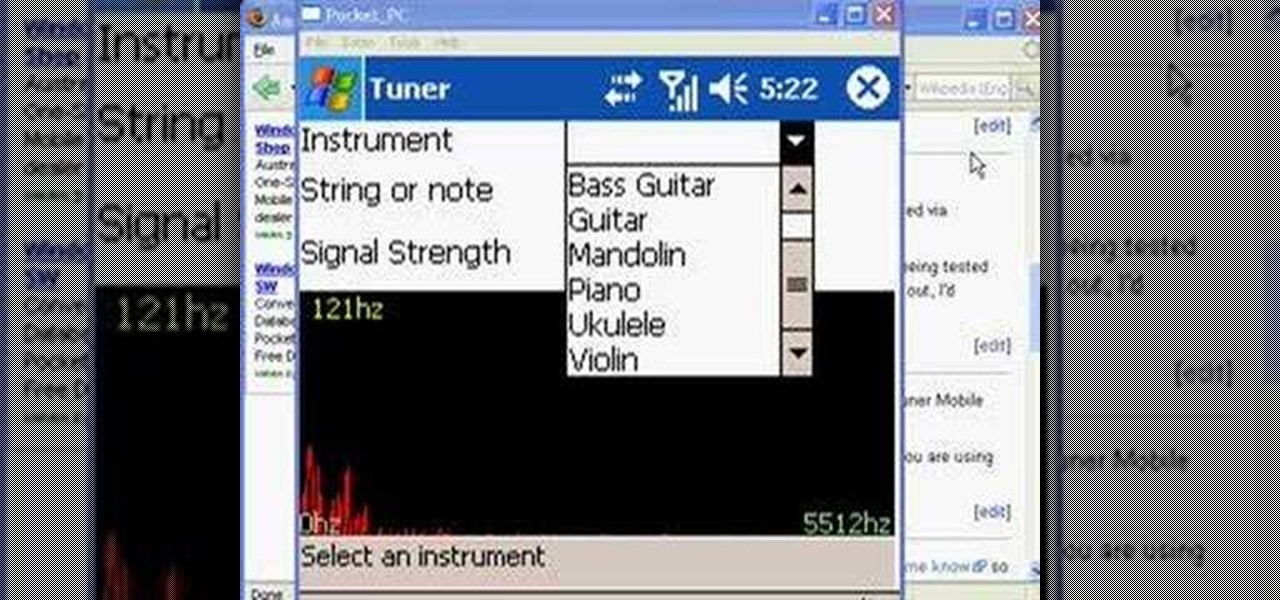
How To: Tune your ukulele or guitar using Windows Mobile
In this video tutorial, viewers learn how to tune their ukulele or guitar with a Windows mobile. Begin by going to the link in the video description and download the Audio Tuner Mobile program. Connect the mobile your PC and install the Audio Tuner program. Open the Audio Tuner program in your mobile phone. Users are able to choose from a variety of instruments such as: the banjo, bass guitar, guitar, mandolin, piano, ukulele and violin. The users are able to choose which note they want to tu...

How To: Sing an easy high note
Aspiring singers can learn how to sing high notes with vocal coach Robert Burnley. When you attain an extended range, your vocal chords will stay in place and then your chords will thin, shorten, or dampen allowing you to reach higher notes. This is what occurs physically when you are reaching higher notes. The key is to have the mentality that you are allowing your vocal chords to get thinner or shorter to reach those higher notes. Part of the struggle is not having the right mindset that yo...
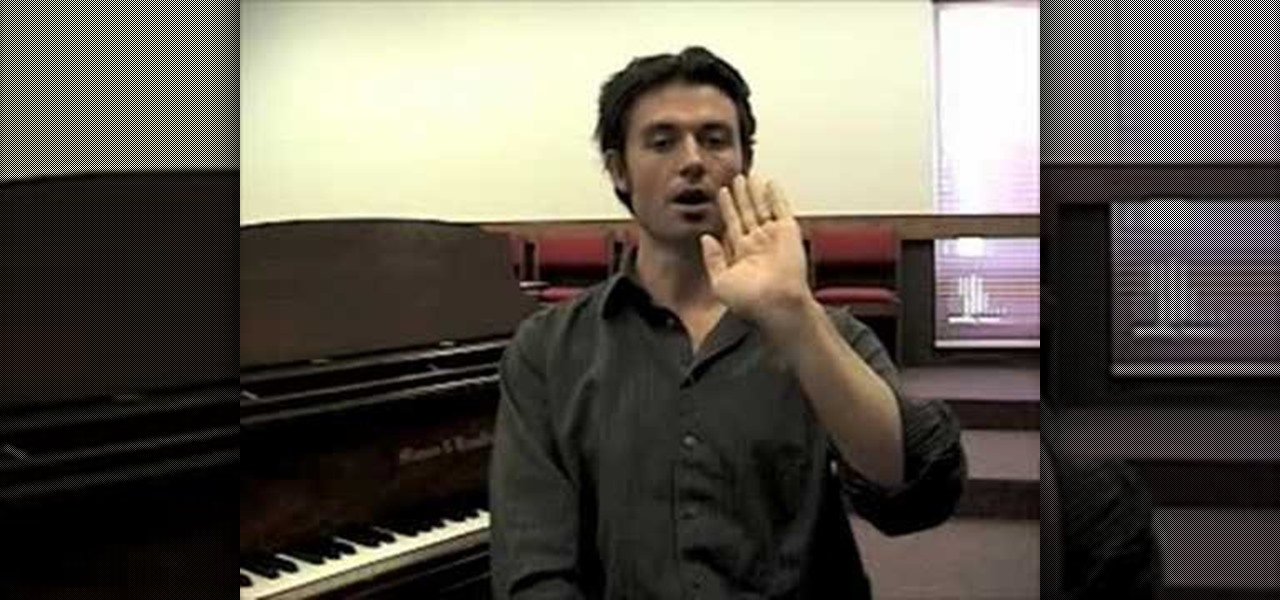
How To: Sing high notes for men
The focus of this video is on singing high notes for men. The first step is to identify which mode your high note are sung in: classical, contemporary, or falsetto. For most men around the E flat note of the range determines which of these three routes is natural to the singer. For classical singers there is a distinct throttling around this pitch change into higher notes, a region known as the passagio. Contemporary singers have a more gradually ramping up as they pass over this transition o...

How To: Sing high notes with vibrato
Saher known as “sbGALT” is here to help with your singing vibrato. He gives an example of what vibrato is & how it varies from straight tone when singing. He sings a note with & without vibrato to illustrate the differences.

How To: Play Johnson's "Kindhearted Woman Blues" on Guitar
Learn to play one of Robert Johnson's best songs, "Kindhearted Woman Blues", on the guitar. This blues guitar songs from Johnson is a great song to start learning the blues, and is structured in a typical 12-bar blues in the key of A. "Kindhearted Woman Blues" was written in the late '20's, early '30's.
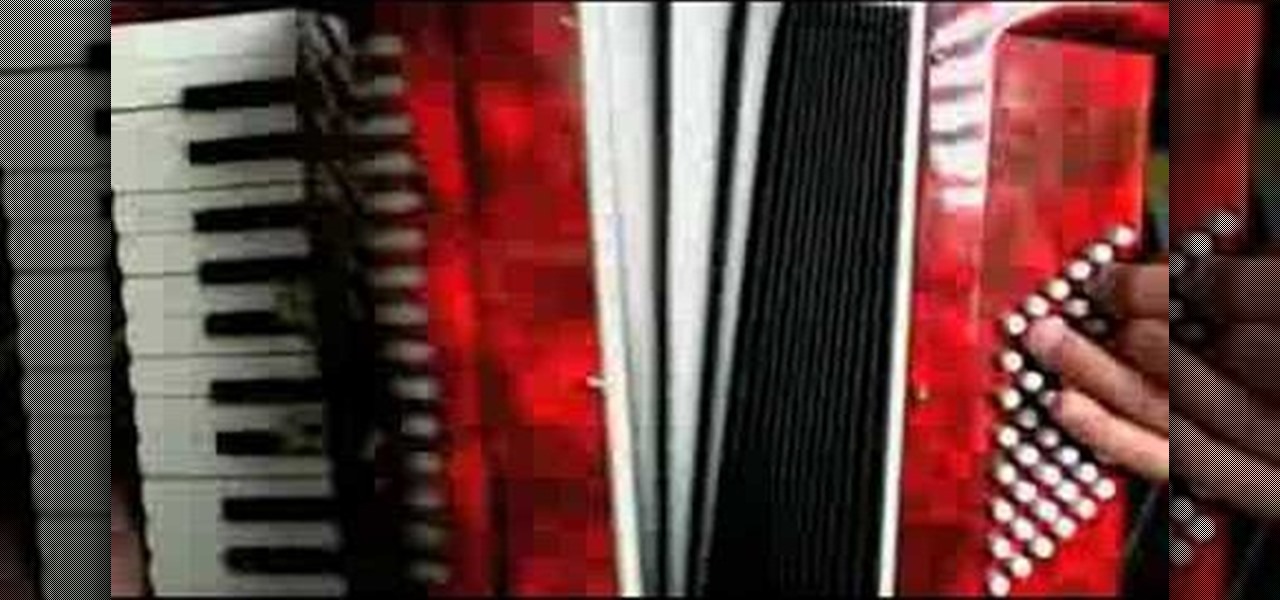
How To: Play "La Noyee" from "Amelie" on the accordion
This is a great video demonstrating how to play "La Noyee" by Yann Tiersen from the French film "Amelie". This tutorial breaks down the notes and chord progressions for the accordion.
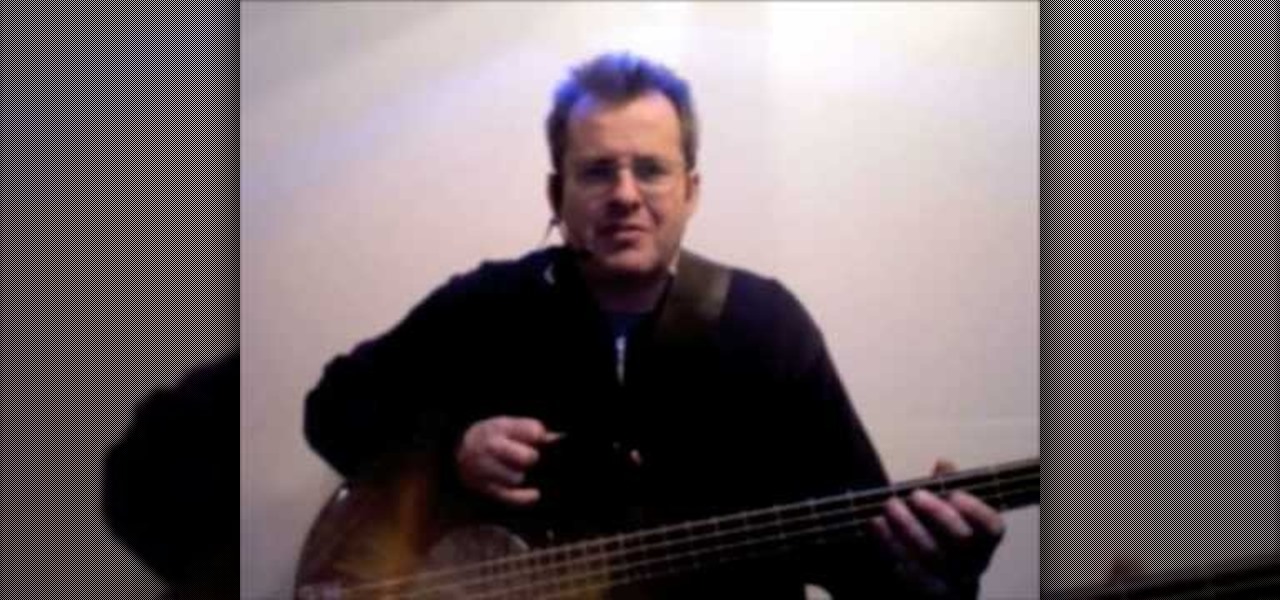
How To: Build basslines from a root note
Paul from how-to-play-bass.com demonstrates basic tips and tricks to building your own basslines from the tonic note. Soon you'll be walking, grooving, and swinging your way up and down the fretboard.

How To: Play "Moondance" by Van Morrison on the bass
Paul from how-to-play-bass.com gives a great tutorial of a simplified bassline to "Moondance" by Van Morrison. Paul reduces the walking jazz bassline to an easier format for beginners.
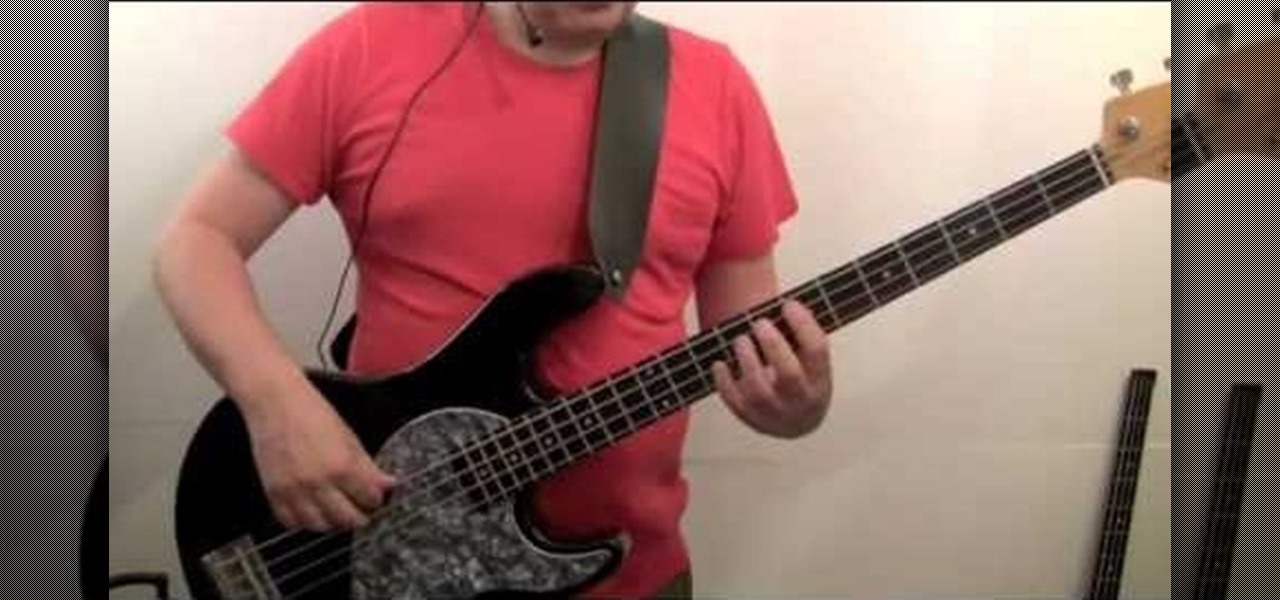
How To: Play the bass line to "London Calling" by The Clash
Paul from how-to-play-bass.com gives a great lesson on how to play "London Calling" by The Clash. This is a great pacing, walking bassline with ample slides and triplet rhythm. Pay attention.
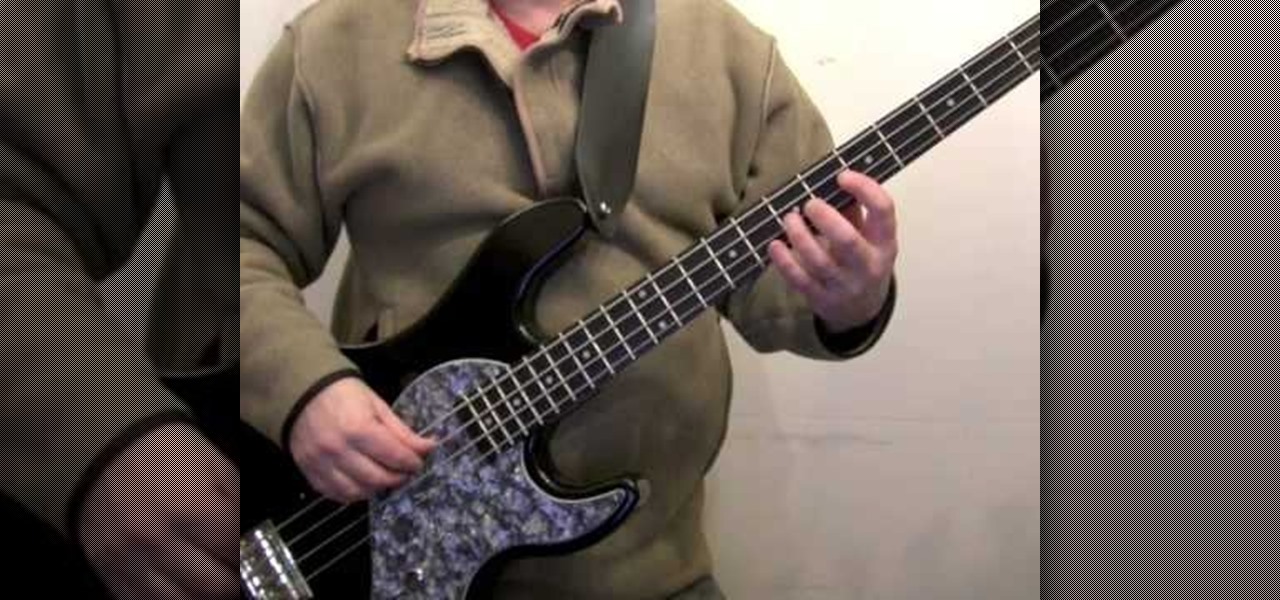
How To: Play "Under Pressure" on the bass
This great tutorial shows you how to play John Deacon's bassline to Queen's "Under Pressure". It's a great breakdown of the various parts and notes so you can learn it very quickly.

How To: Play "Another Brick in the Wall" on electric guitar
The song might say "We don't need no education" but you might to play this Pink Floyd song from the late 70's. This video shows you how to play "Another Brick in the Wall". You'll learn the main riff first and the chords that accompany it. You'll learn the strumming technique to make it sound just like David Gilmore did. Next, you'll learn the chords to the chorus. You'll now learn a fill in lick that comes in the middle of the chorus. Once you learn each section the song is complete and you'...

How To: Play the "Super Mario Bros" theme on electric guitar
We've all heard of Mario. He is probably one of the most famous characters in video game history created by Nintendo. Remember the theme song that you would hear and dance to when you were a kid? This video shows how to play that theme song on guitar! This guitar lesson shows each fret and string to strike as it carefully explains each note in the Mario theme song. Watch the fingers fly as you learn how to play using tabs with walkthrough explanations every step of the way. Learn each section...

How To: Play the intro solo to "Welcome Home (Sanitarium)"
In this lesson Bobby Crispy teaches you the whole solo, breaking it down into small sections, and demonstrating it note for note with on screen tabulator to guide you. You'll learn how to play the intro solo to Metallica's "Welcome Home (Sanitarium)" from the Master of Puppets album. The tabulator used in the video is very easy to read, and his teaching style easy to follow, as he demonstrates the solo in a slow manner so that you can readily see which notes he is playing and how to place you...
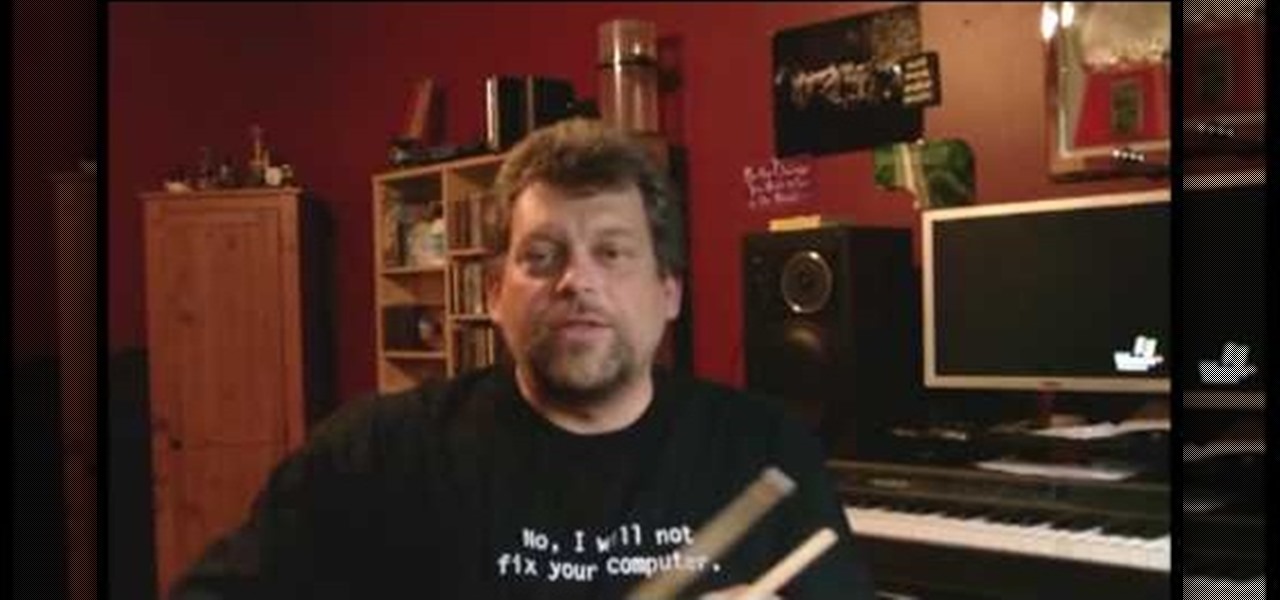
How To: Play drums and play a simple rock beat
Make sure your neighbors don't mind before you learn to play the drums with Mr.G. In this new four part series, he is going to teach you how to play the drums. You'll start with extreme basics, including your grip, to learning a simple 16th note full measure. Watch this, if your sick of just "banging", whether it be pots and pans or a proper drum set.
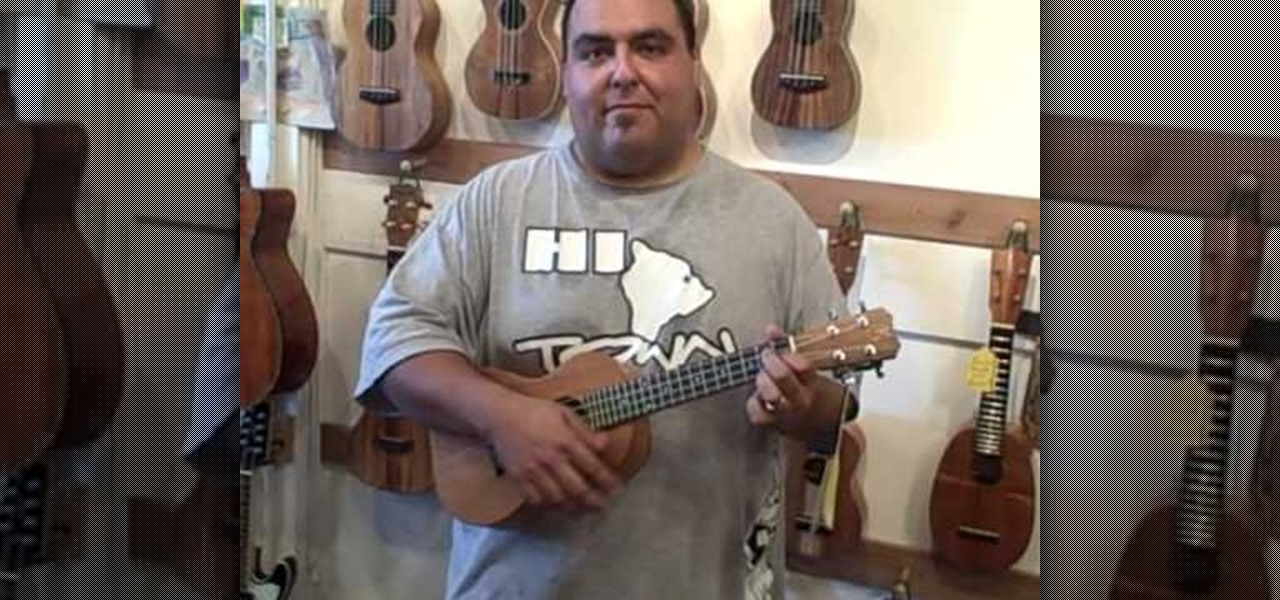
How To: Tune a ukulele without a tuner
Brian Padilla from Hilo Guitars demonstrates how to tune a ukulele without a tuner. To tune a ukulele without a tuner, first pluck the G string and compare it to the seventh fret of the C string and match the pitch. On the same C string drop down to the fourth fret and match the E string to it. Go to the fifth fret on the E string and match the A string to it. Make adjustments as necessary. If your tuner runs out of batteries or you're stranded in an area without electricity, use the fret mat...

How To: Coil a guitar cable
This is a video demonstrating how to properly coil a guitar cable. First some incorrect ways of folding the cable are shown. One should not wrap the cable around the forearm, pick it up in a ball, or wrap it like a lasso around the hand. The correct way is demonstrated by taking a section between the thumb and index finger, rolling the index finger toward you, then making another loop by rolling the index finger away from you. This process is repeated until the entire cable is coiled. Folding...
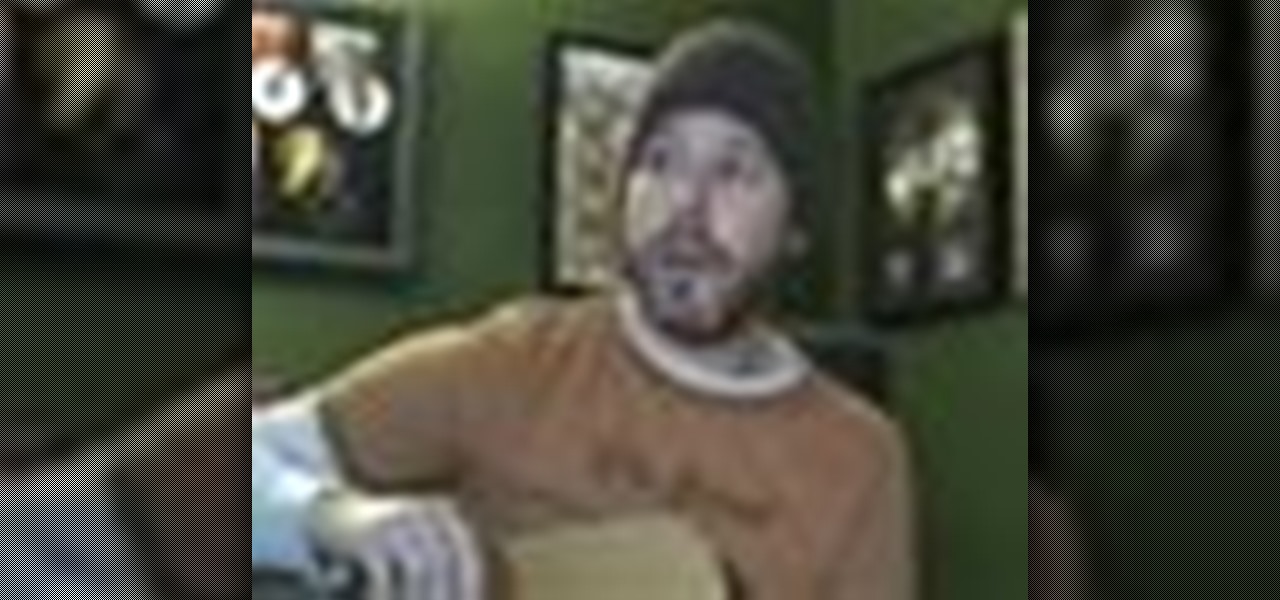
How To: Play "Rehab" by Amy Winehouse on acoustic guitar
Your Guitar Sage provides the viewer with a good way to learn how to play an Amy Winehouse tune on an acoustic guitar. Amy Winehouse's song, Rehab has a few open chords and bar chords to be mastered. The videos demonstrates how to play the piece through first and then takes the viewer through each part of the song. The names of the chords and bars are provided. The verse and the chorus pieces are split to provide the viewer with help in fingering, pace, rhythm and timing within each part. The...
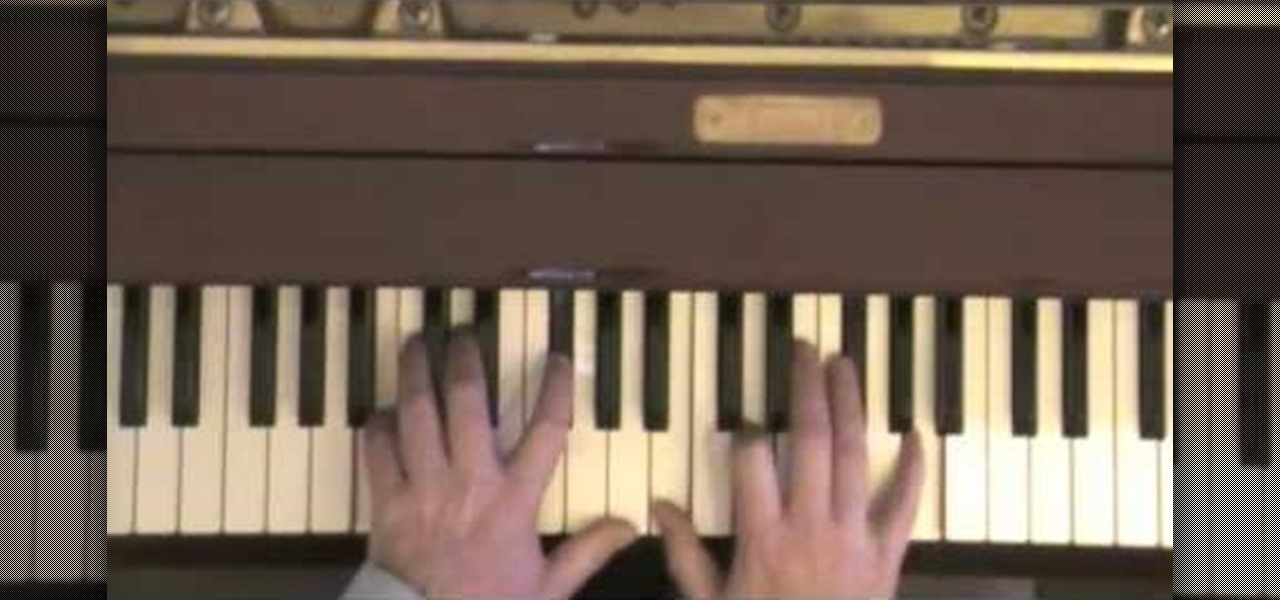
How To: Play "Drive My Car" by the Beatles on a piano
pianojohn113 demonstrate how to play drive my car (Beatles) on a piano using the American method of notes. he explain which musical notes play one by one including the most important part of this song "the solo part", providing you a sequence of tips for your creativity and enabling you to create your own solo part for this song following his method. he explain the video in a very easy way to understand even for those who have a minimal knowledge about pianos. this video lets you get a set of...
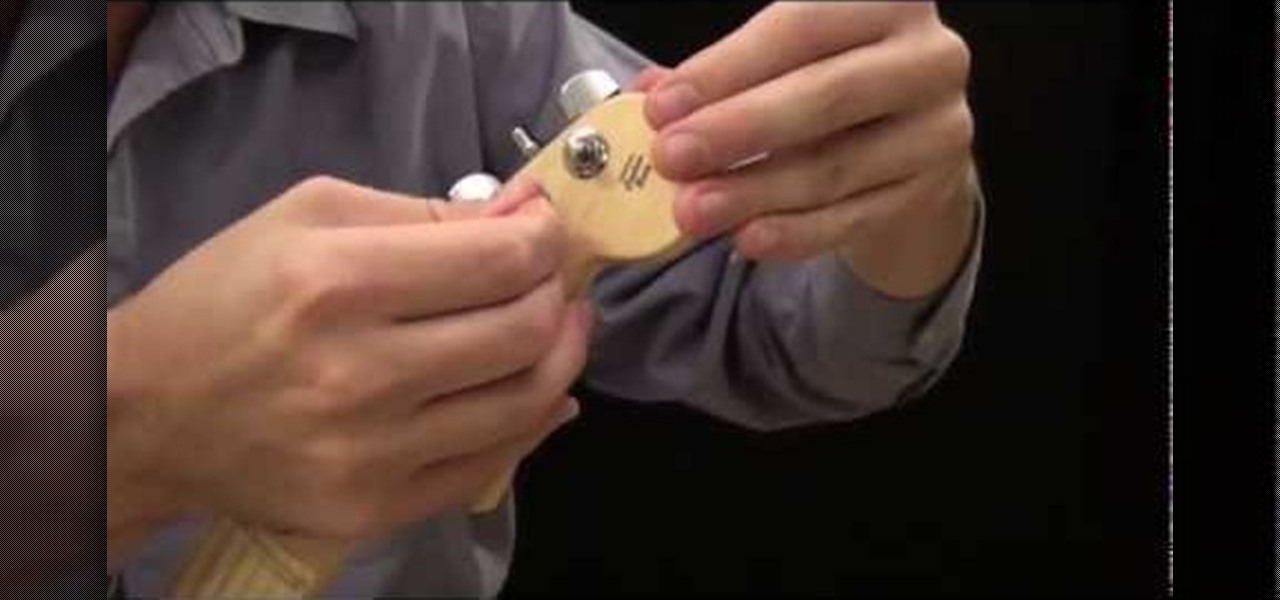
How To: Put new strings on an electric guitar
Learn with this informative video how to put new strings on an electric guitar. The best kind of strings to put on an electric guitar are Ernie Ball Coated Slinky strings. The first thing you want to do is release the tension in the string. You do this by loosening up the tuning knobs on the top of the guitar. The string will then be loose and will release all the way to the bottom bridge. Next all you have to do is push the string towards the guitar and it will push through out the back side...
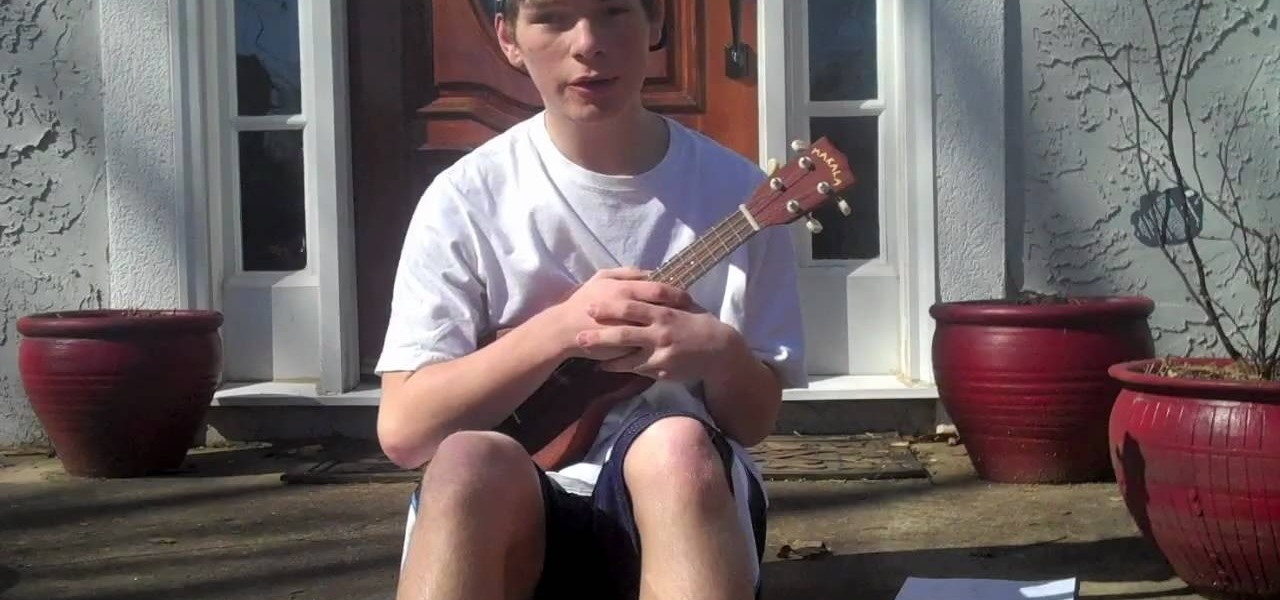
How To: Play "Mad World" by Tears for Fears on a ukulele
In this video tutorial, viewers learn how to play the song "Mad World" by Tears for Fears on a ukulele. Tears for Fears are an English pop rock duo formed in the early 1980s. Begin by tuning the ukulele. On the ukulele, there are four chords to this song. The chords are: E minor, G, D and A . This video is very descriptive and clearly explains the procedures. This video contains step-by-step instructions and a visual demonstration for viewers to easily understand and follow along. This video ...
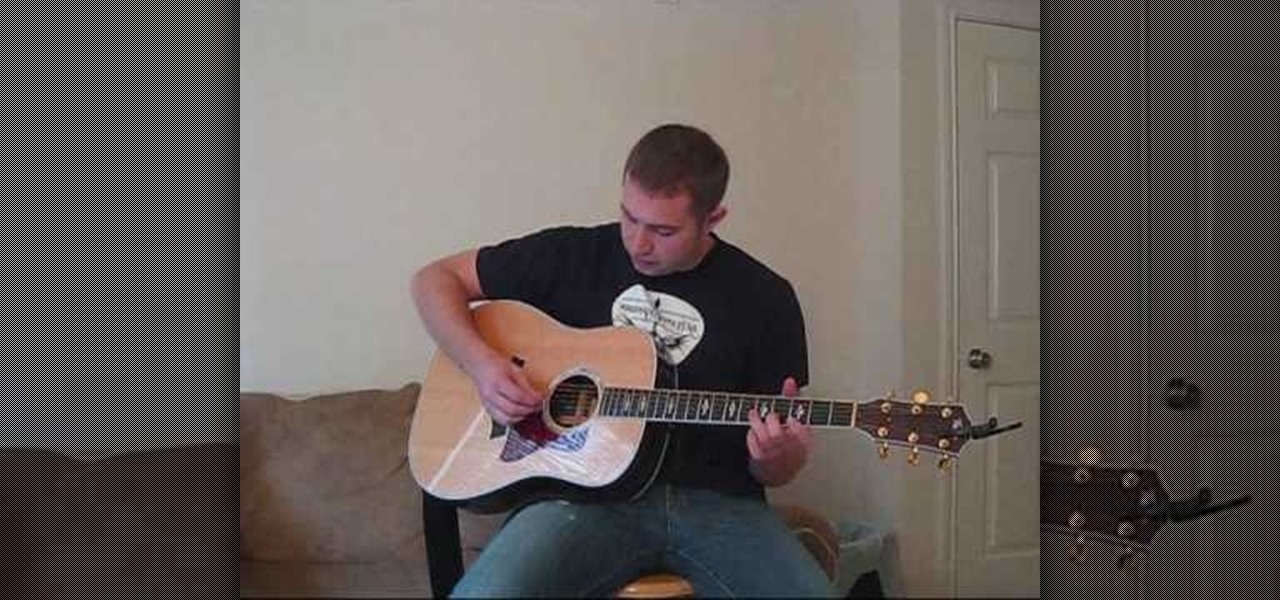
How To: Play She Talks to Angels by the Black Crowes on guitar
"She never mentions the word addiction in certain company..." Have any idea who sings that wonderful song? Only the Black Crowes, one of the best rock bands to hang around since 1984 and sell 20 million albums. Learn how to play "She Talks to Angels" by the Black Crowes on acoustic guitar in this two-part guitar lesson video.

How To: Play "Breathe" by Taylor Swift on guitar
"I see your face in my mind as I drive away..." Any idea who sings that? Only the most popular contemporary female musician around right now: Taylor Swift. In this two-part video tutorial, learn how to play "Breathe" by Taylor Swift on acoustic guitar.

How To: Extend your upper range while singing
In this video, Kevin Richards teaches us some vocal exercises and how to expand the upper range of the head register voice for singing. The exercise, a "reverse octave", involves starting at a high note (in the head register) with a "He" sound, and singing down an octave to end up with a "Ya" sound. The purpose of this is that making the "h" sound in "He" works the diaphragm. Richards will explain this and demonstrate it in the video. After learning how to do the exercise, you will learn help...
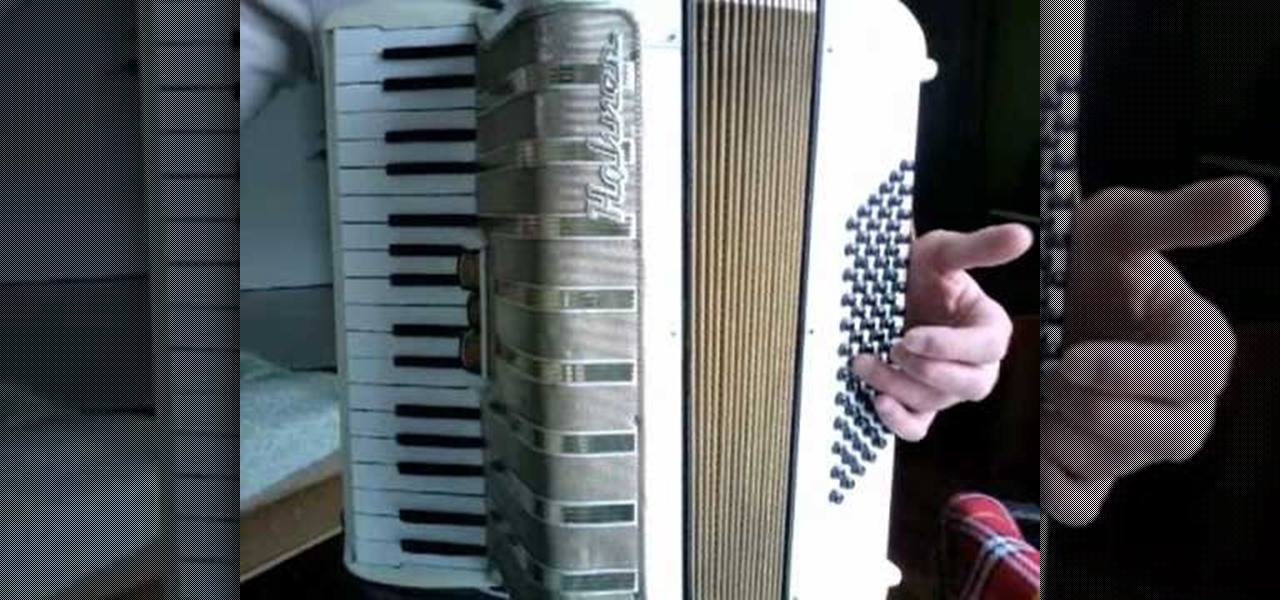
How To: Coordinate the left and right hand on the accordion
One of the basics of accordion playing and left and right brain splitting, this tutorial demonstrates how to coordinate your left and right hand when playing the accordion.
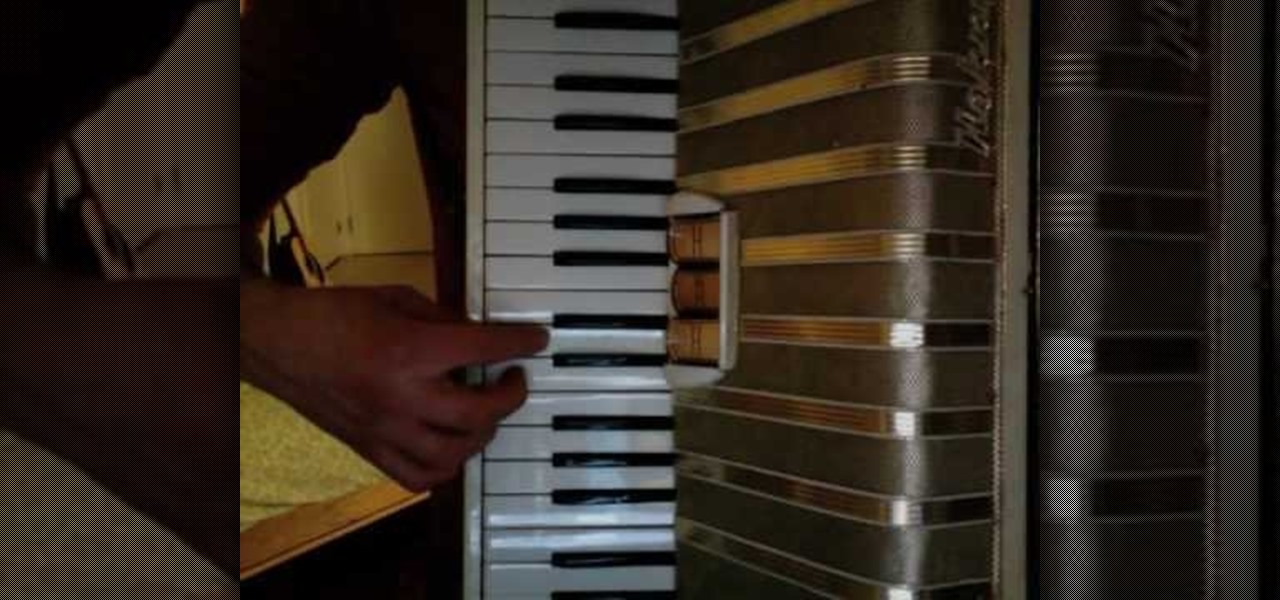
How To: Play the "Amarcord" theme on the accordion
This tutorial demonstrates how to play the theme from Federico Fellini's "Amarcord", written by Nino Rota (also the composer for "The Godfather"). The fingering is very complicated so take it slow.
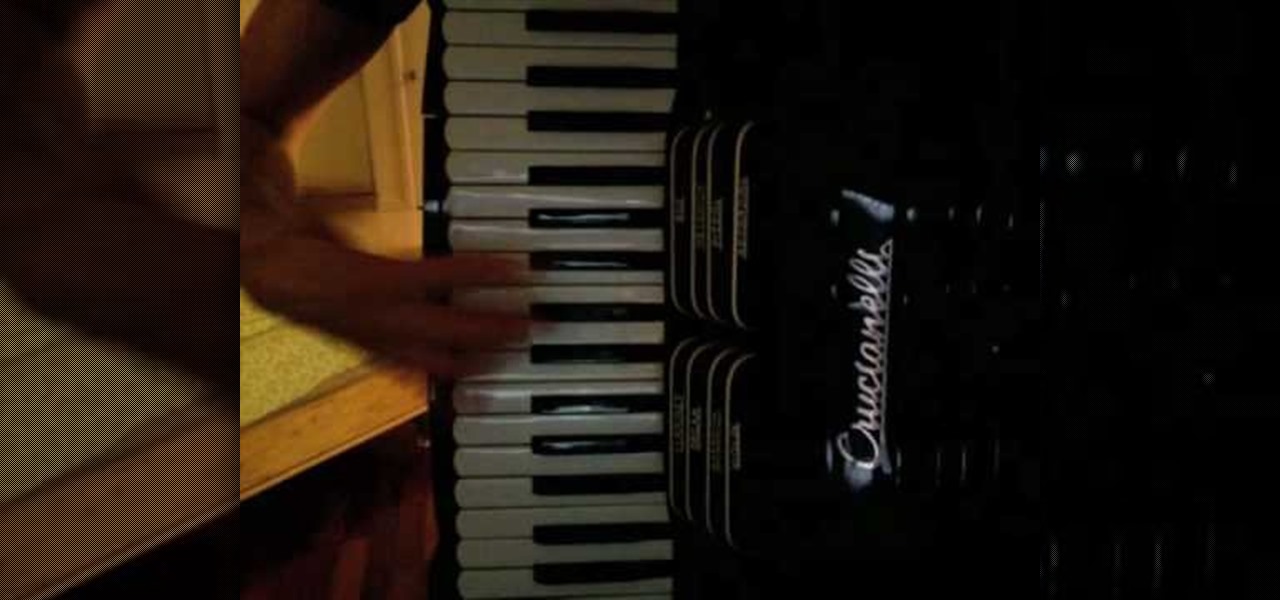
How To: Play "What Is Love" by Haddaway on the accordion
This tutorial shows you how to play "What Is Love" (by Haddaway) made famous by Will Ferrell and Chris Kattan's Saturday Night Live skit: Night at the Roxbury. The video demonstrates great accordion technique to give the song a pulsing rhythm.

How To: Play "Perfect Day" by Lou Reed on the accordion
This tutorial demonstrates how to play the left hand accordion part for Lou Reed's "Perfect Day". The video breaks down the keys individually for you to better understand.
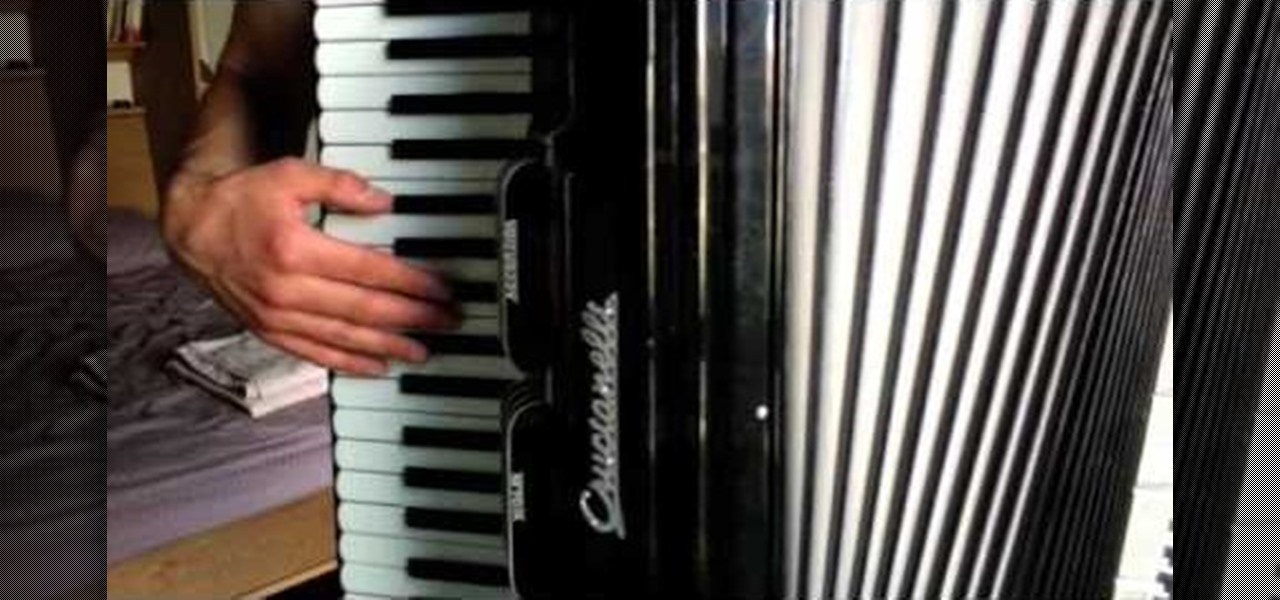
How To: Play "Elephant Gun" by Beirut on the accordion
This video is a great tutorial on how to play "Elephant Gun" by Beirut's Zach Condon. This song, from the Lon Gisland EP, is a great song for beginner accordion players.

How To: Play Leonard Cohen's "Hallelujah" on acoustic guitar
So you care for music, do ya? In this free video guitar lesson from the Internet's Siggi Mertens, you'll learn how to play Leonard Cohen's oft-covered "Hallelujah" on your acoustic guitar. While this lesson is geared toward intermediate players, beginners should also be able to follow along given a little perseverence.
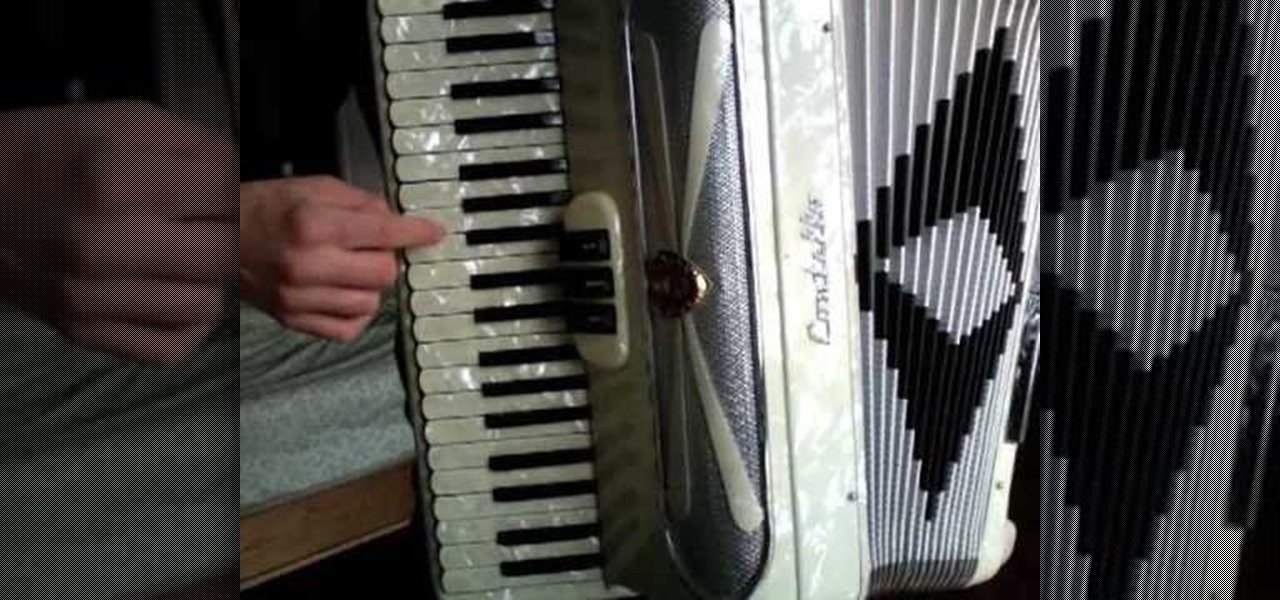
How To: Play "Lies" from the film "Once" on the accordion
This is a great tutorial for playing the song "Lies" from the Irish film "Once" on the accordion. This song, written by Glen Hansard, is a great reinterpretation on the accordion.

How To: Study & practice triad chord construction
This is a video tutorial on how to study and practice triad chord construction. The video starts off with explanations on consonant sound which is a stable and relaxing sound like any major or minor chord. The other type of sound is the unstable kind of sound. There are 4 kinds of triad chords: major, minor, augmented and diminished. To construct a major triad, you take the 1st note, 3rd note and the 5th note from a major scale. For example, if we take a C major chord, then we use the C, E an...
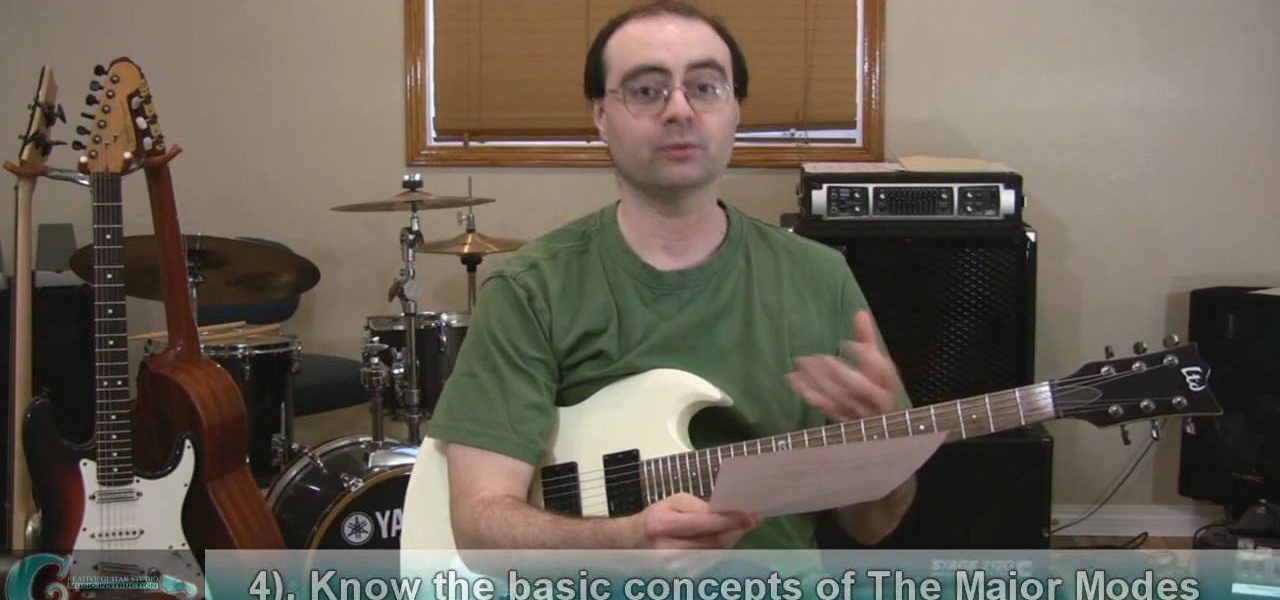
How To: Use key modulation in a musical piece
This how-to video will show the proper use of key modulation in music. Follow Andrew Wasson of Creative Guitar Studio as he takes you through the uses of key modulation in music writing. Watch as he explains the difference between direct modulation and pivot chord modulation. Once you know the different types of modulation, you can learn how to introduce both of them to your music writing as you continue growing as a muscian.
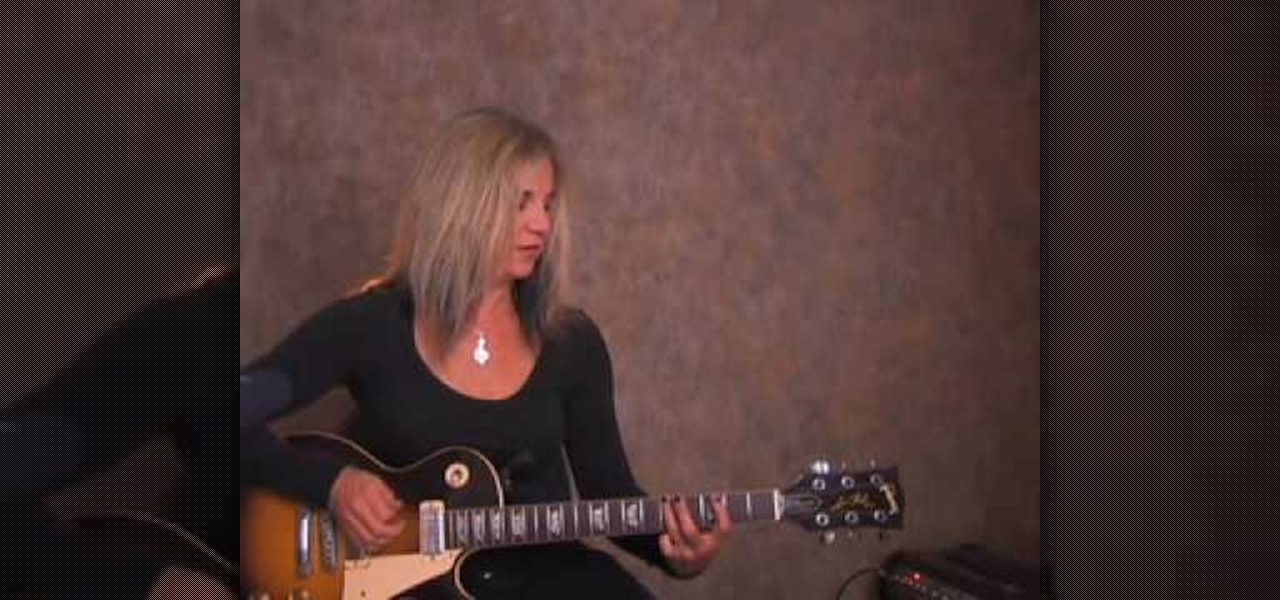
How To: Play Nickelback style riffs with an electric guitar
Everyone wants to be a rock star! Grab your electric guitar and get ready to rock. This guitar lick is in the key of D. The tuning is "Drop D", just tune your low E to D. Hit the low D twice. Next slide from the third fret to the fifth fret. Now go down to the A string and the third fret (C). Repeat these notes three times. Then mute check for a three count. For the next part move up two frets for the all of the riff. This riffs are great for southern style rock and alternative rock. The vide...

How To: Tune your ukulele or guitar using your computer
Have you ever thought of tuning your ukulele or guitar with your personal computer? Why not? One of the advantages is greater accuracy. Don't fiddle around too much with the instrument - just select the correct notes, and you're well on your way to a finely tuned ukulele or guitar. Get the most out of all your tools! Watch this video to learn how to tune your instruments properly!
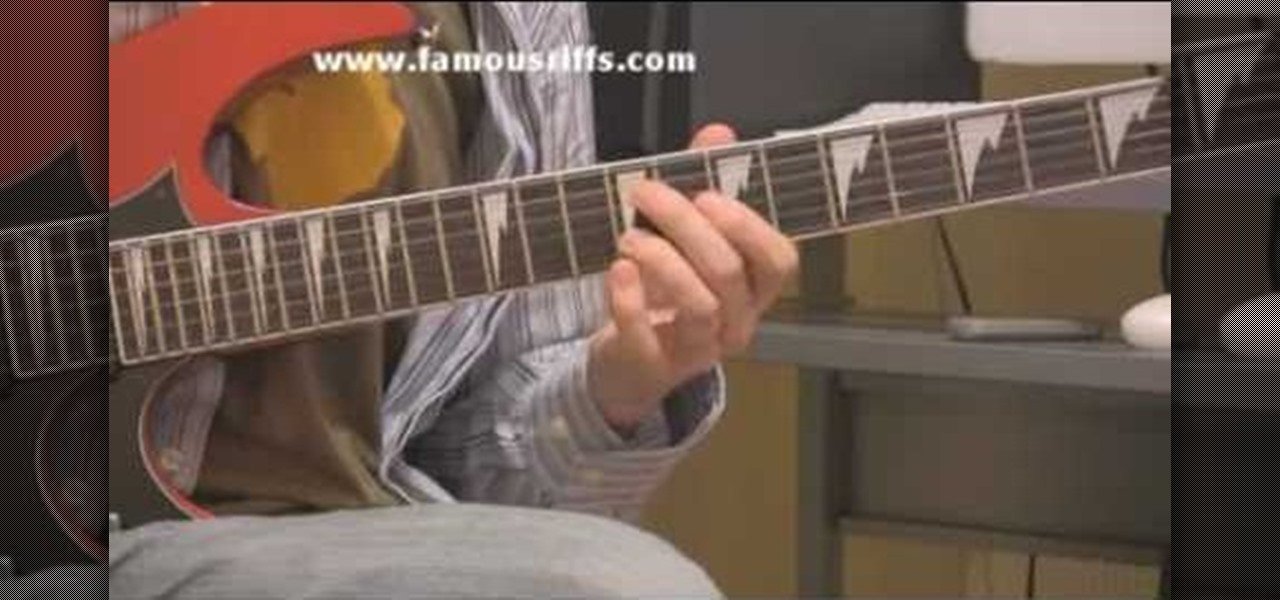
How To: Play "Thunderstruck" by AC/DC on electric guitar
This is a great instructional video on how to play thunderstruck by AC/DC on electric guitar. Thunderstruck is played mainly on B string. It is the second string as you may be aware of. First you should start with 12th fret and hit that note. Then move to 10th fret and 9th fret. Then go back to 10fret and back to 9th fret. Then you have to go 7 and then again 9 and then 5. Now go to 7th fret and then to 4 and 5. Then to 4 and 5 and again 4 and 5 and finally to 4. You can write down on these n...

How To: Tune your ukulele for beginners
Here is a lady tuning her ukulele with a Korg tuner that she has picked up at her local music shop. Turn on the tuner and you will notice that the lights come on. The green light is going to let you know when the note is in tune and each one of the red colors will let you know which way you are out of tune. The notes on the ukulele are from lowest to highest are, ‘A, E, C, G.’ When the red light shows on the left side of the green then it is flat so you should tune up. If the red light shows ...
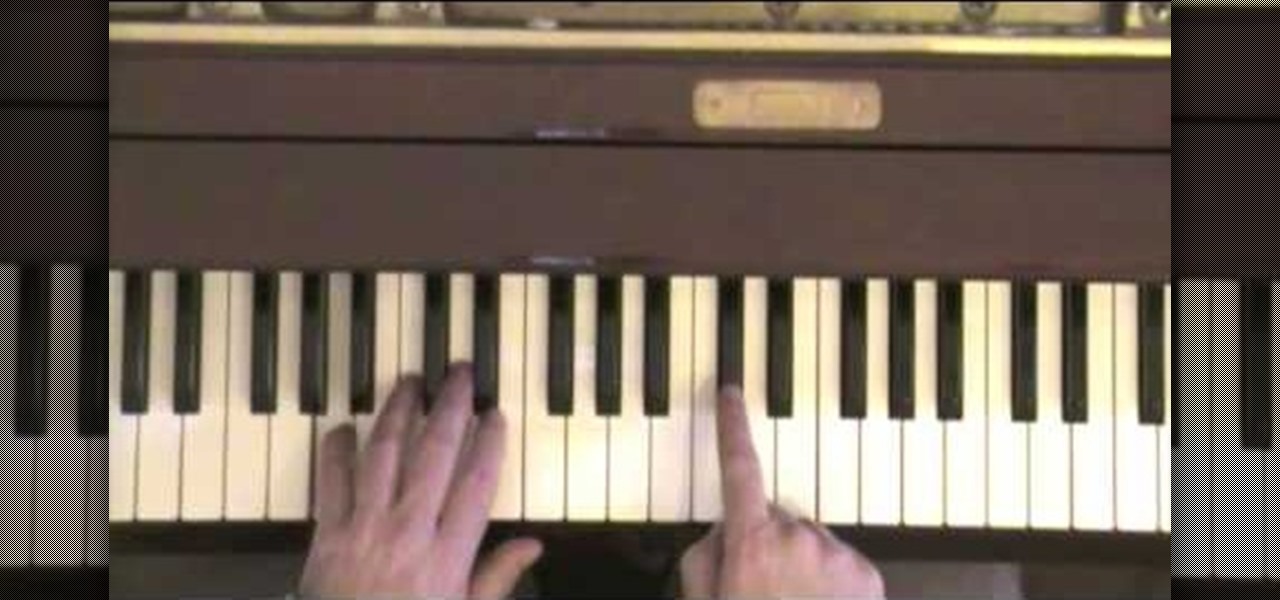
How To: Play the Beatles' "Because" on piano
This video teaches a piano novice how to play the introduction to “Because” by the Beatles, which was written by John Lennon. A close up on the instructor’s hands from above demonstrates the fingering for the piece. The view of the fingering is very important, since this video does not teach you how to read sheet music. Instead, it takes you through the rudimentary fingering. You will not need to know what a quarter rest, an eighth note, or a key signature mean. The instructor plays the intro...

How To: Play "November Rain" by Guns N' Roses on the guitar
This guitar lesson shows how to play Guns and Roses' "November Rain" from the album "Use Your Illusion" . In this three part lesson you'll learn how to play the chords in the verses, bridge and chorus. Soon enough you'll be playing just like Slash himself on the electric guitar.
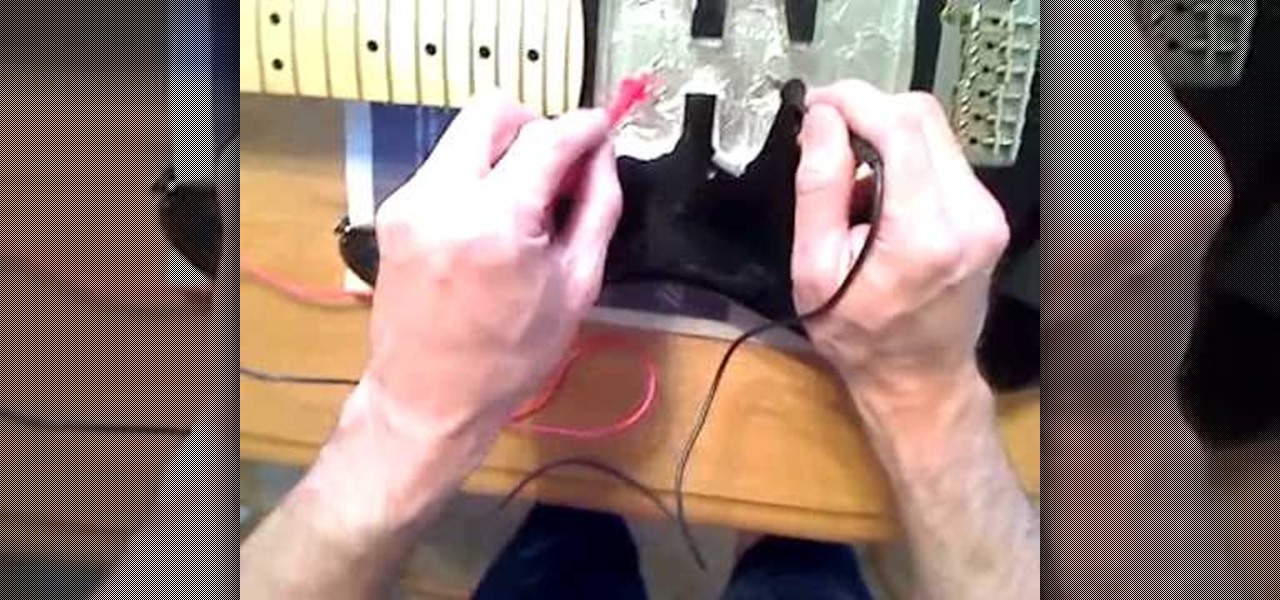
How To: Use a multimeter to check connectivity on a guitar
The first thing you need to get is a multimeter this will help you test it. There might be a function on the meter that will give you the amount of voltage in that particular area. Then you have to put foil tape on all of the inside of the guitar to test it. You need to get two wires from the meter and then put them both on the foil tape on the guitar. If you don't hear a beep then you add more tape in that area where there is no activity. You can also test this on the ground.



